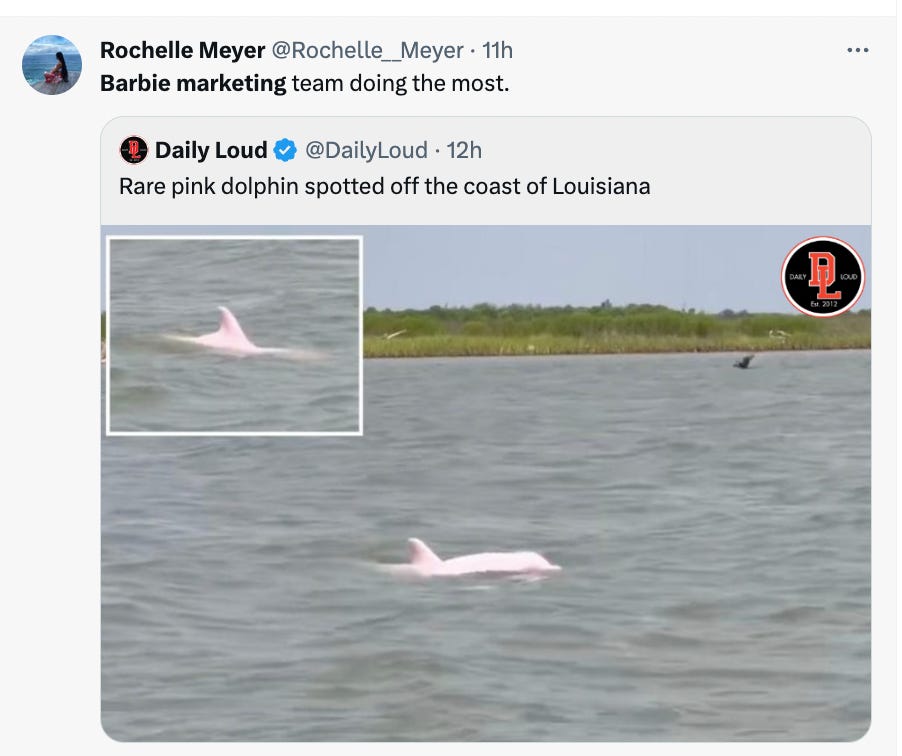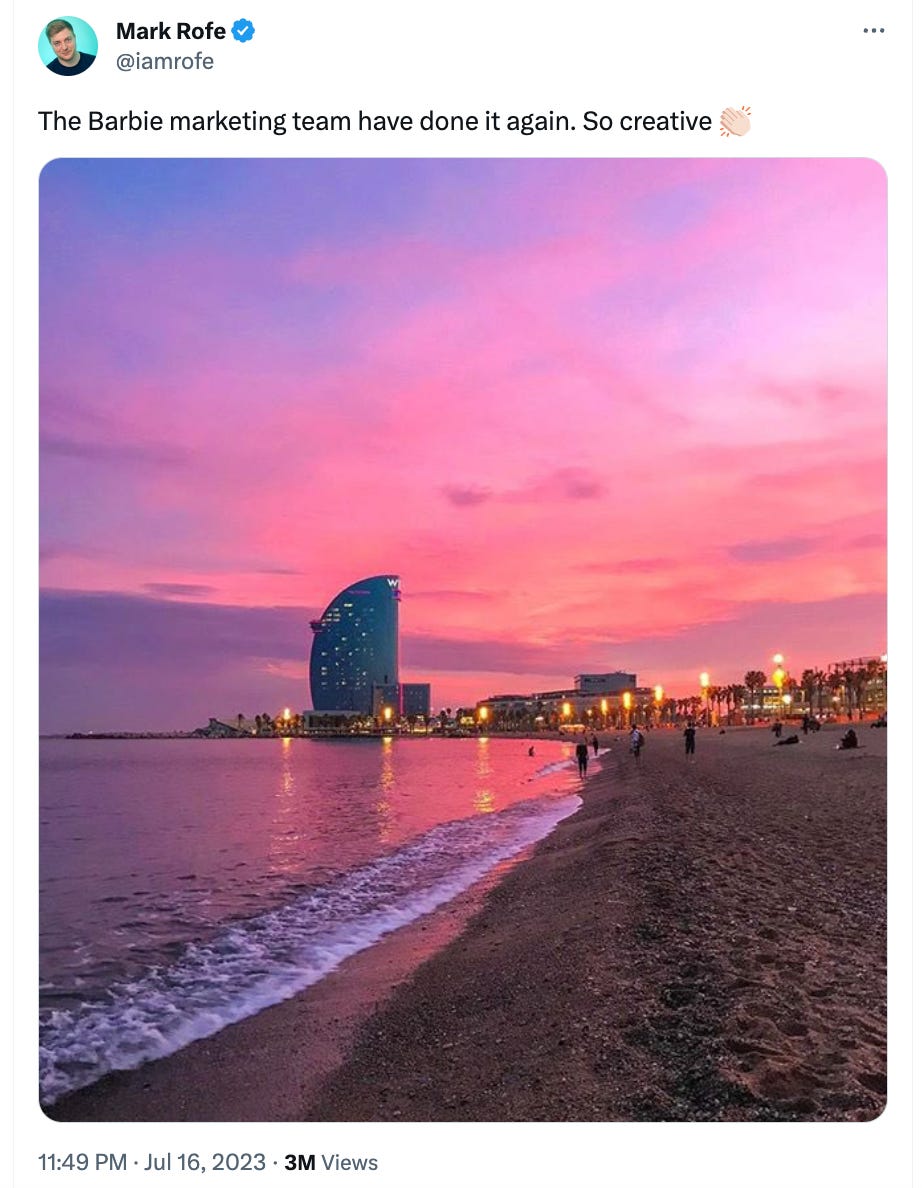Barbie is on everyone’s lips.
Marketers are hyperventilating about the endless collabs and partnerships that Barbie’s marketing team has struck. Boston University counts over 100 collaborations in the Barbie marketing playbook. The Burger King in Brazil offers a pink burger. You can AirBnB a life-size Malibu Barbie mansion. Pinkberry and Coldstone offer Barbie flavors. You can put your Barbie Joybird couch on your Ruggable Barbie rug and play your pink Barbie Xbox.
And it’s not just official collabs; Barbie fever has struck. I went to my first event of Barbie season, an unofficial Barbie-themed party celebrating women business owners by the drinks brand Besa. The venue was lit in pink, a pink carpet served as a runway, and pink wristbands got you in the door. The dress code? You’ll never guess.
Just down the street from this non-official Barbie party, the actors’ union is striking. The strike includes not just the in-front-of-the-camera work but all the marketing-related work that modern movie premiers require for success after. The very actors that would be walking red carpets, doing rounds of interviews and press junkets, and being as ubiquitous as possible to promote their films are on strike. SAG-AFTRA has stipulated no red carpet premiers, no media interviews, no film festivals or awards, and not even social media for SAG actors. When the strike was called, the cast of Oppenheimer walked out of a premier in solidarity, as the world’s stars lock arms with struggling actors for better pay, residuals, and protection from the potential threat of generative AI.
This leaves studio marketers scrambling to redefine movie marketing without their stars.
Margot Robbie, the star of Barbie, is proudly on strike, along with the rest of her co-stars and 160,000 other SAG-AFTRA members. The strike was called a week before opening day, ending her iconic press tour which doubled as a Barbie fashion parade with real-life versions of Barbie outfits.
Despite this unprecedented strike, Barbie marketing soldiers on. There’s several reasons why their marketing is effective even without their mega-stars doing the rounds of press.
First, Barbie isn’t reliant on an actor or even on a character. While other films scramble to find replacements for actors during their marketing pushes, Barbie can rely on the brand. The relationship that people have with Barbie reaches into childhood, and the iconic B connotes decades of layered meaning about dolls, growing up, femininity, materialism, gender relations, and of course, pink.
Barbie is very straightforward IP. Barbie pink is not as precious as Yves Klein blue or as strict as most brand colors. Fuschia, soft pink, bright pink—all signal Barbie. It is simple to do a brand collaboration with Barbie; the pink settles sweetly or hotly on anything it touches. In this Barbie era, anything remotely pink has a brand linkage to the Barbie IP and immediate brand linkage to the film, no Margot Robbie required.
The simplicity of the colors mean that anyone can be a marketer for Barbie, and I mean anyone. One hero at this non-official Barbie event wore a soft pink Def Leppard shirt—in any other context, this would be a little bit of kitsch, but in this context it was all Barbie.
And finally, the collab and partnership approach has stretched Barbie’s marketing dollars and driven a sense of ubiquity of the film. But as the strike starves other films of one of their primary marketing tools—the star—Barbie’s marketing continues to outperform even when its lead performers can’t.
Barbie’s an icon with brand assets galore, and the movie’s marketing machine has already created a wave of hype that will carry them to box office glory, through a strike the marketers most certainly didn’t plan for. The strike will reshape Hollywood in many unpredictable ways, including how film marketers look to other ways to pave to box office success.
You’ve just read Framing, a regular newsletter about what’s good culture, marketing, and business by Anita Schillhorn van Veen.
I’m Director of Strategy at McKinney, on the advisory board of Ladies Who Strategize, and a writer over at my other favorite Substack Why Is This Interesting.






